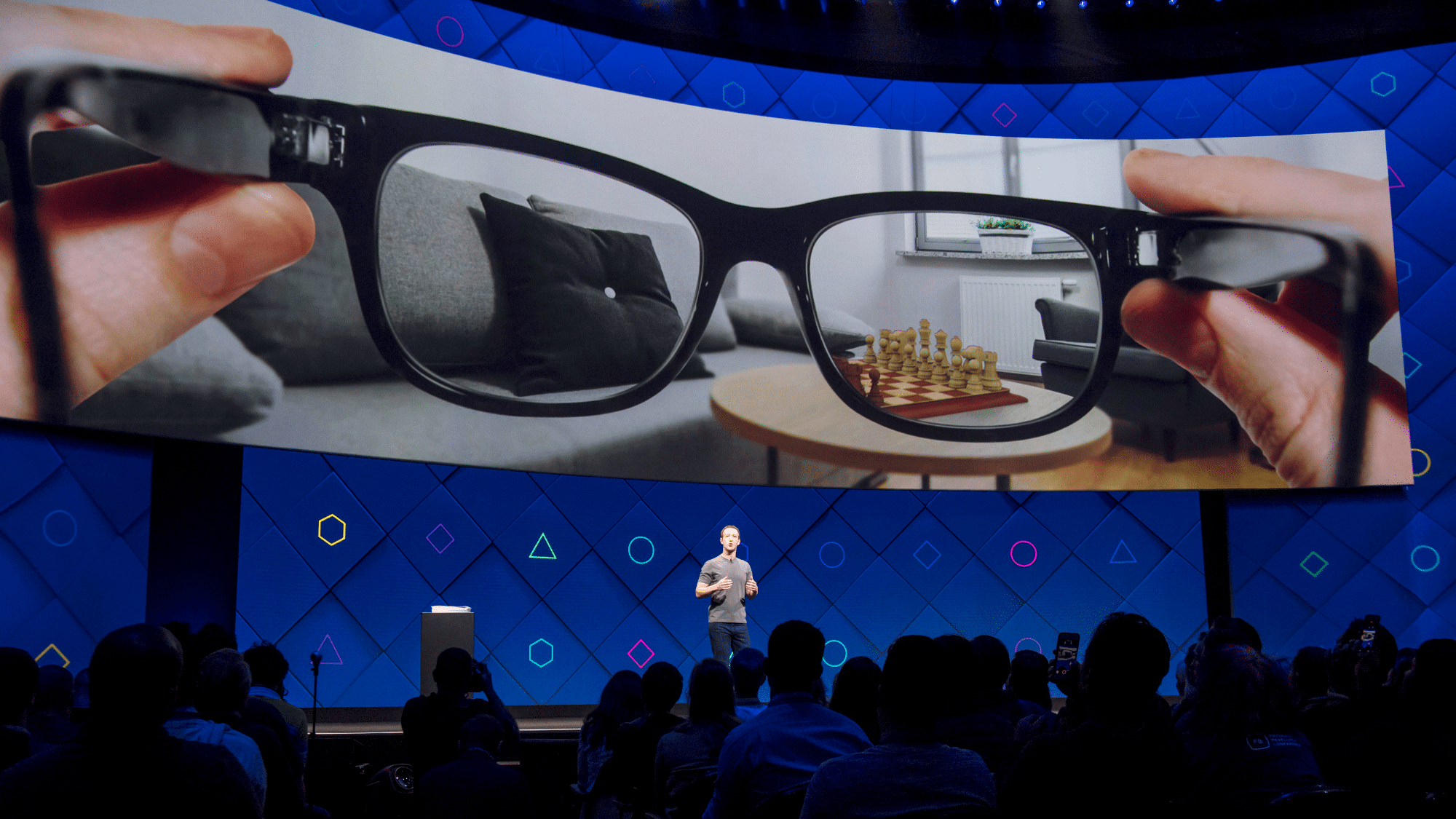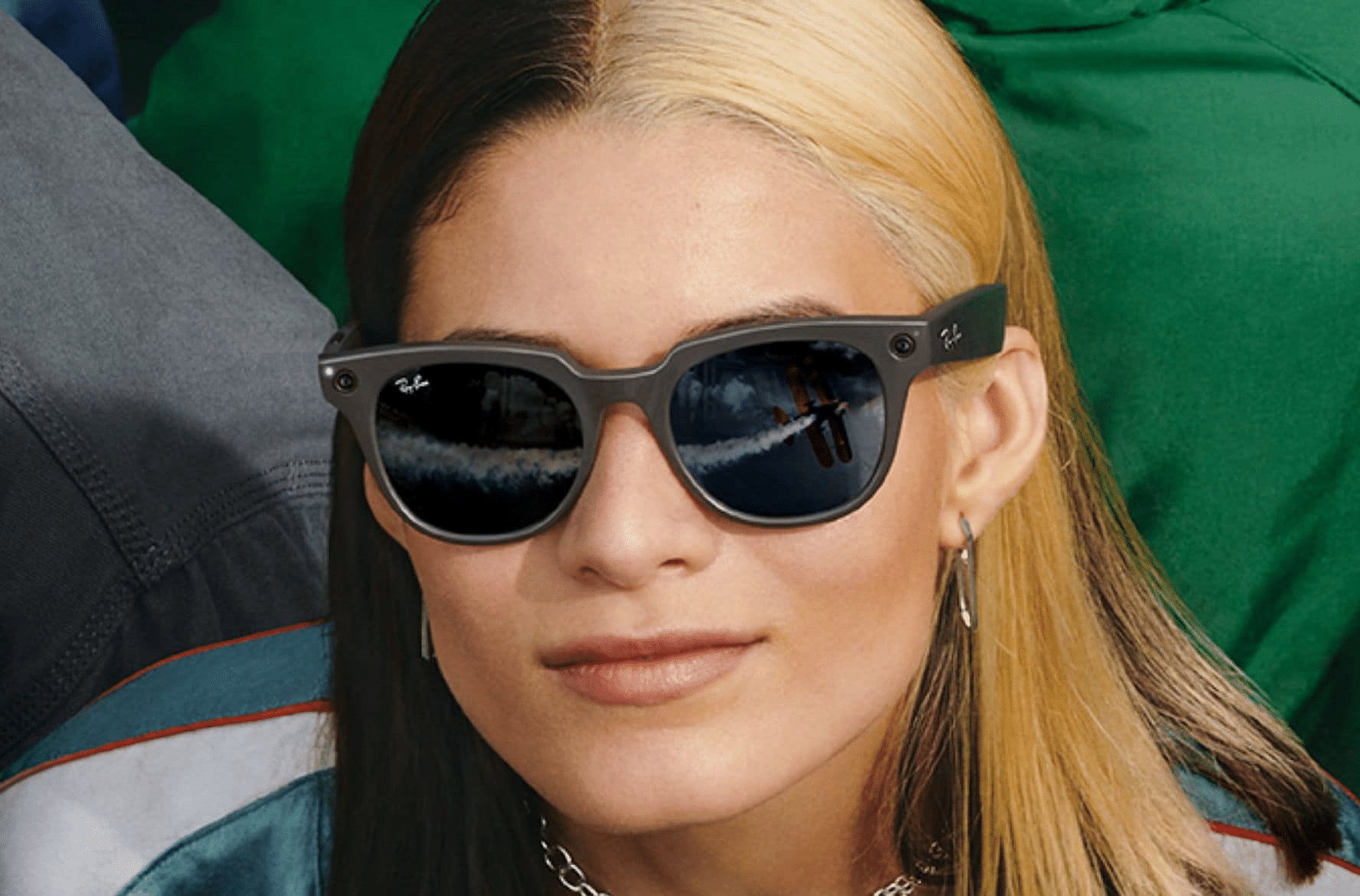The Verge‘s Alex Heath just released a report detailing Meta’s apparent plans for glasses over the next six years.
Facebook, now Meta, has repeatedly publicly confirmed it’s working on augmented reality glasses since as far back as 2016. In late 2019 the company described a product launch as “a few years out”.
Korean news outlet The Electronic Times claimed Samsung will manufacture a custom tracking chip for Meta’s glasses, and The Information reported Meta has agreed to buy several years of the entire output of AR microLED display maker Plessey.
Nazare: Expensive AR Glasses
At the Connect 2021 conference in October Meta announced Project Nazare, “our first full augmented reality glasses”. The company didn’t, however, show a prototype or even real footage, instead showing a brief “simulated” concept clip. “We still have a ways to go with Nazare, but we’re making good progress,” Mark Zuckerberg remarked.
Heath writes that Meta plans to release Nazare as a product in 2024. It apparently weighs 100 grams, around four times normal glasses, and resembles Clark Kent’s thick black frames. Nazare will apparently have a battery life of just 4 hours and be powered by an included wireless puck which can fit in your pocket. The idea here is for future iterations of Nazare to be able to fully replace your smartphone.
The original target field of view was 70 degrees, but “that goal likely won’t be met” Heath writes.

The components to deliver this true AR experience – including eye tracking cameras, custom waveguides, and microLED projectors – apparently cost “multiple thousands of dollars”. As such, Nazare, at least the first generation, will be a niche product for early adopters and developers.
Meta has already spent billions of dollars developing Nazare, and plans a lighter & more advanced second generation model for 2026 as well as a third generation in 2028, Heath reports.
Hypernova: Affordable HUD Glasses
While Nazare will be very expensive true AR glasses, Heath says Meta also plans cheaper mainstream glasses in the same year (2024) codenamed Hypernova.
Hypernova will apparently pair with your smartphone to display notifications and contextually useful information in a small heads up display – similar to Google Glass but in a regular glasses frame.

Last week The Information reported Meta plans to launch a second generation of its Ray Ban Stories smartglasses in 2023. Stories are essentially camera glasses – they have speakers for music and phone calls but no display. That report suggests the second gen won’t have a display either.
Heath seems to describe Hypernova as separate to the Stories product line. But could Hypernova actually be the third generation Ray Bans, launching a year after the second gen? That would seem to make more sense, but it’s unclear.
Neural Wristband Input For Both
A major challenge in shipping consumer AR glasses is the lack of an obvious appropriate input method. A VR controller would not be practical for glasses you want to use out of your home. And while voice recognition is now a mature technology, few would want to dictate potentially private text out loud in front of strangers. Typing on a virtual keyboard could work, but would be tiring and lack the tactile feedback of touchscreens.
Both Nazare and Hypernova will apparently be bundled with Meta’s neural wristband. Meta has discussed its development openly. The device reads the neural signals passing through your arm from your brain using EMG (electromyography). Such a device can track finger movement before it even happens, and can even sense incredibly subtle finger gestures not clearly perceptible to others nearby.

Facebook filed a patent application for such a device in early 2019. New York based startup CTRL-Labs had been working on the same idea, so Facebook acquired the company in late 2019. Last year the company showed off its progress on this device in more detail.
Heath’s report suggests Meta plans to release a regular smartwatch this year, with a second generation the year after. But in 2024 the third generation is expected to integrate this EMG technology, and be bundled with both Nazare and Hypernova as the control method.
“Everyone I’ve talked to who has tried a prototype of the band Meta is working on says it’s one of the most impressive tech demos they’ve ever experienced. If it works at scale, the company thinks it could have the next mouse and keyboard” Heath writes.
Meta Is Becoming A Hardware Company
If Heath’s report is accurate and Meta is able to meet Mark Zuckerberg’s ambitious timeline, the company could slowly transition from being known primarily for its software to being known just as well for its hardware.
These plans won’t go without competition of course. Apple reportedly plans its own AR glasses for 2025, and Google is acquiring suppliers to do the same. Other tech giants like Amazon likely won’t sit on the sidelines either.
But Meta has been working on these technologies for almost 8 years now, and Heath wrote that Zuckerberg is still investing more than any other company.
“Zuck’s ego is intertwined with [the glasses]” a source of Heath’s apparently said – “He wants it to be an iPhone moment.”






























